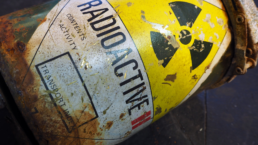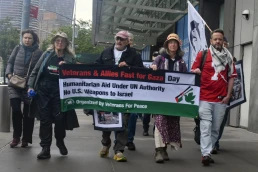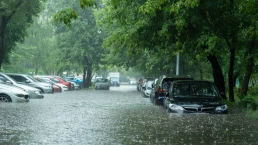The nuclear industry has taken advantage of loose restrictions on Native American land, jeopardizing thousands of lives.
By Sanjana Manjeshwar, Outrider
Since the development of nuclear energy in the mid-20th century, Native American reservations have been subjected to thousands of tons of toxic nuclear waste, with dangerous consequences for health, the environment, and tribal sovereignty. The disproportionate concentration of nuclear waste on Native lands is not a coincidence. Instead, it reflects a targeted effort by the US. government to saddle Indigenous communities with “the most hazardous material ever created by humanity or nature.“

For example, over 500 abandoned uranium mines on the Navajo Nation have poisoned residents’ drinking water and caused elevated rates of kidney failure and lung disease for generations. Members of the Yakama Nation in southeastern Washington, home to the Hanford Nuclear Site, experience high amounts of thyroid cancer and congenital disabilities. And the Western Shoshone tribe, which has been exposed to significant nuclear fallout from decades of nuclear testing on its land (known as “the most bombed nation on earth“), suffers disproportionate leukemia and heart disease rates. These are just a few examples of the devastating health impacts caused by what activists and scholars have aptly described as “radioactive colonialism.”
The disproportionate amount of nuclear waste on Native land can be primarily attributed to the many legal, economic, and regulatory power imbalances between Native American tribes and the federal government.
Recent Posts
These Veterans Starved Themselves To Protest The War In Gaza
July 8, 2025
Take Action Now As food in Gaza becomes increasingly scarce, activists are pushing their bodies to the limit in solidarity.By Emmet Fraizer, The…
ICE Agents Are Terrorizing Los Angeles With Brutal Tactics
July 8, 2025
Take Action Now ICE agents have established a pattern of brutal use of force in immigration raids.By Jonah Valdez, The InterceptSince June 6,…
Talk World Radio: India Walton On Zohran Mamdani And Freezing Out ICE
July 7, 2025
Take Action Now India Walton, former Democrat nominee for mayor of Buffalo, NY, discusses Zohran Mamdani and the race for NYC mayor and how to deal…
How Climate Change Is Worsening Flooding And Heavy Rainfall
July 7, 2025
Take Action Now The latest science on the link between climate change and natural disasters — and how they may be playing out where you live.By…




